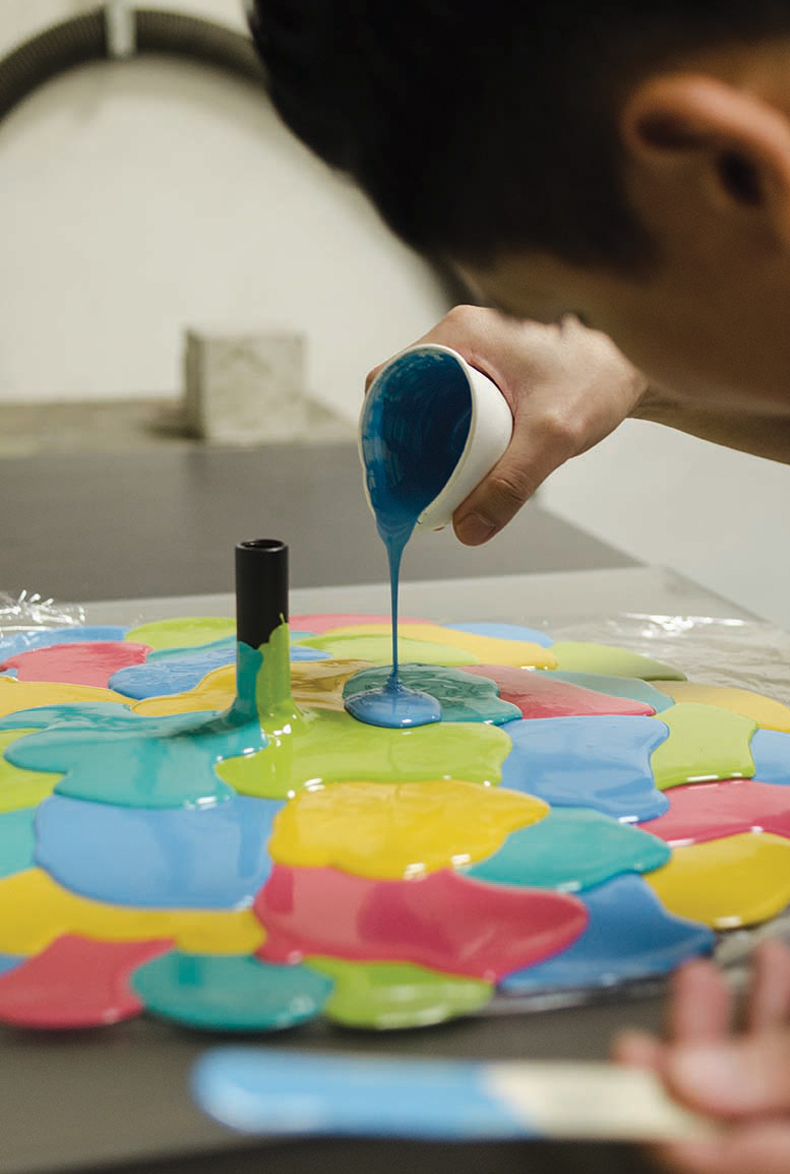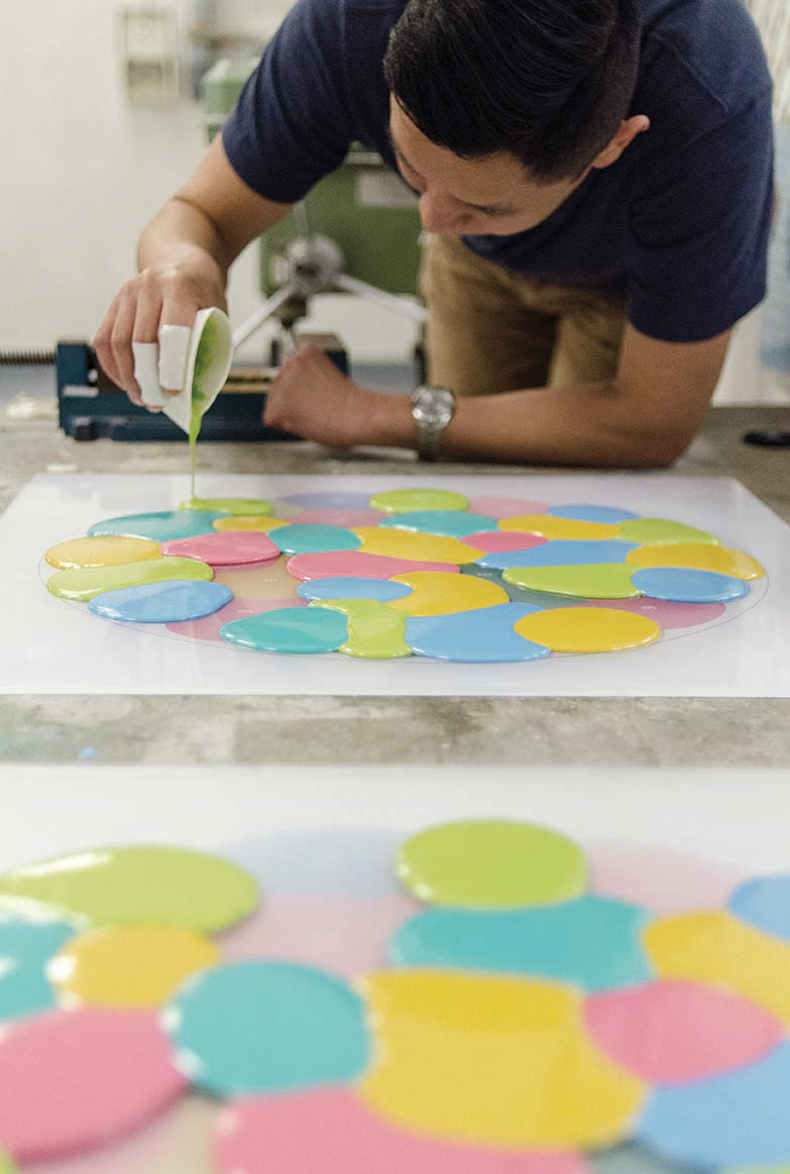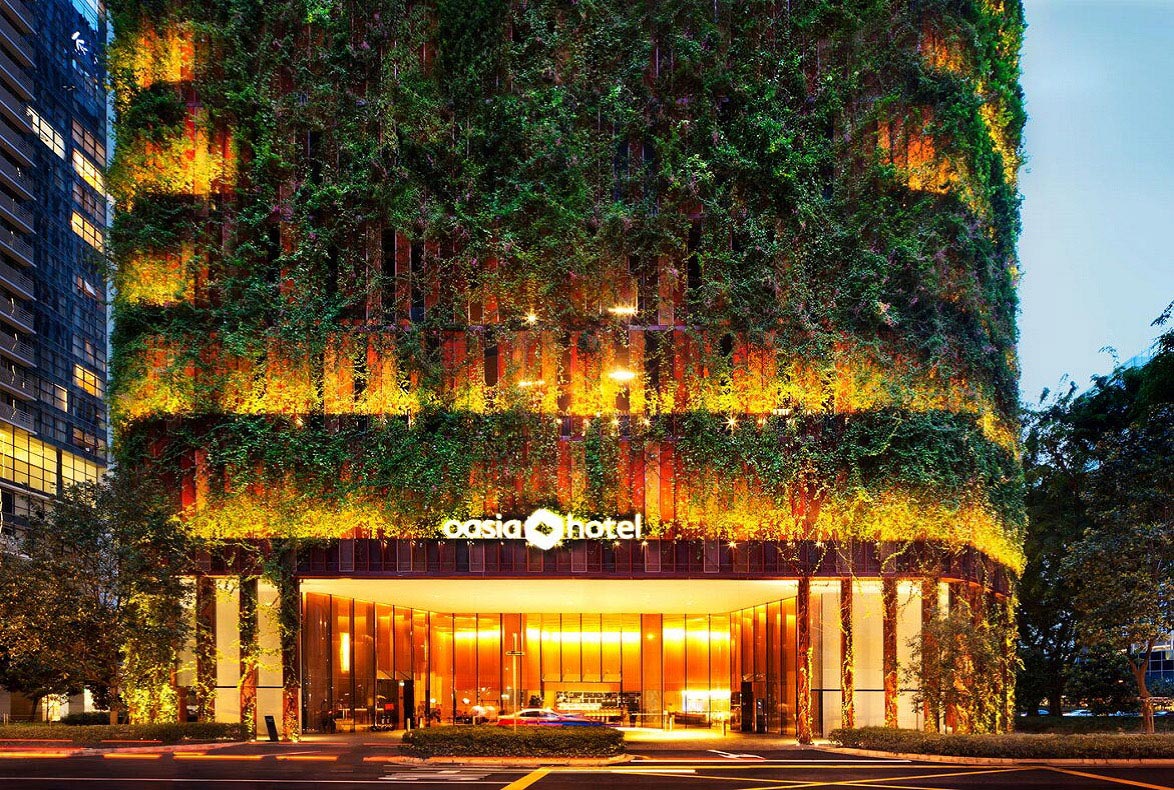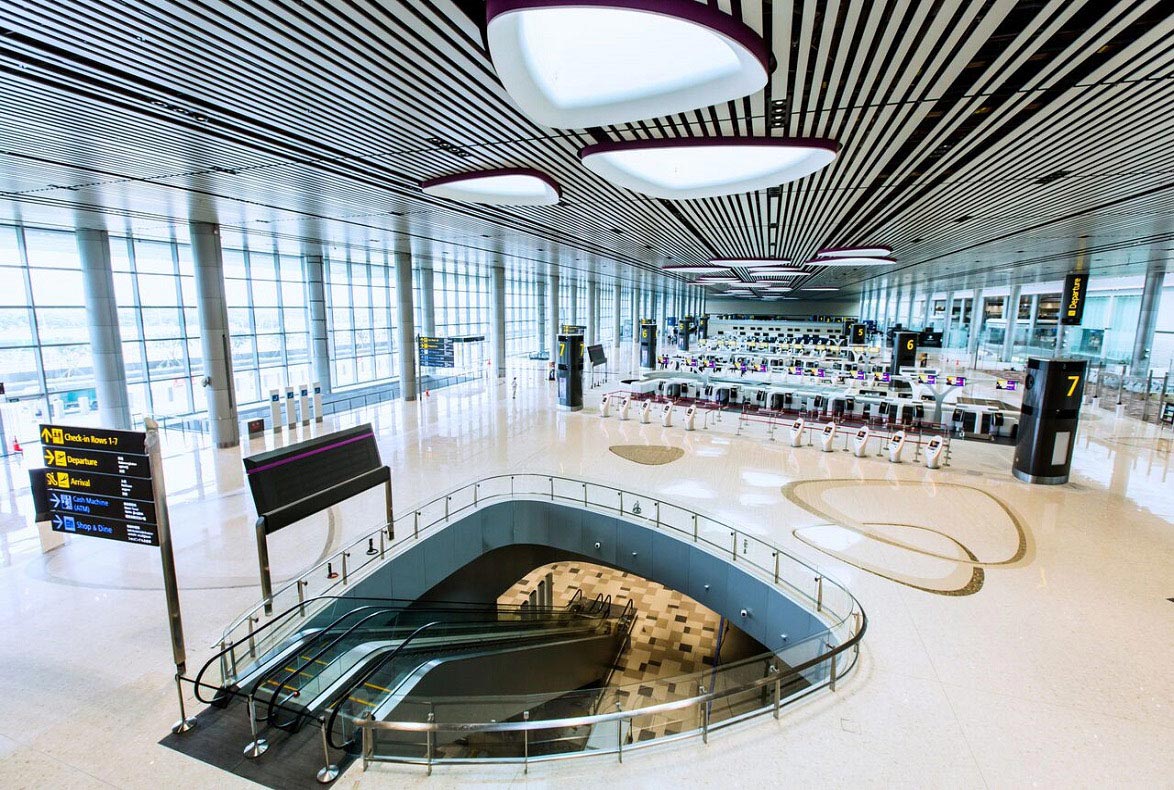DESIGN OF THE YEAR 2015
Pour
Hans Tan Studio
CONTACT
[email protected]
Like every one of the works emerging from Hans Tan Studio, Pour defies categorisation. Commissioned as a new piece for The Alchemists exhibition at the 2015 Triennale di Milano, it is a circular side-table – but which table has ever been inspired, as Pour is, by the rainbow-layers of the lapis sagu cake?
The table comprises overlapping glossy circles of vivid yellow, turquoise, pink, sky blue and light green. At first glance, it resembles an Ishihara Plate Test. On closer inspection, it appears as if the colours are flowing up the table’s stem. At this stage, one is intrigued by the manufacturing process, and tries to unravel the technicalities without being distracted by the sunshine mood evoked by the colours.
It’s no surprise to learn that Pour is the result of five intensive months of investigating fabrication techniques and processes, and complicated experimentation with plastic resin-casting methods. Hans describes the table as simply “moulding without a mould”, made by casting the table surface upside down without any walls to hold in the liquid resin.
Aesthetics aside, what makes Pour an even more satisfying result from a technical standpoint is that Hans chose to work with a material he was completely unfamiliar with. “I didn’t know if the idea was even feasible.” Neither did the industry experts he consulted.
About the Designer
The landing page for Hans Tan’s website gives a hint of the designer’s subversive wit. It’s almost too easy to skim over the three innocuous looking lines: “Designs… plural noun… a secretive plot or scheme, often with hostile or selfish intents: He had designs on the chair.”
This playful thrust is a thread in the designer’s work. Everyday objects – many rooted in Southeast Asian design – are reimagined with restless imagination and cheerful glee.
“My work is often occupied with the authenticity of the contemporary design artefact being a deliberate gesticulation of material culture,” says Hans, who is also an assistant professor at the National University of Singapore’s Division of Industrial Design.
And so, a tray is made of white nylon springs made from 3D imaging. The patterns on a traditional Peranakan teapot are perforated into individual dots that resemble a magnified Roy Lichtenstein print. A sequence of Singapore’s national lion symbol transforms an ordinary white plastic shopping bag into an eye-catching accessory. Each work provides a fresh perspective and brings a smile to one’s face.
This is not to imply that Hans’s work is without discipline. For all the apparent frivolity of the final product, he takes the task of design seriously, investing his work with impressive fundamentals. Every design is never produced for its own sake. Every finished product can actually be used. As Hans points out: “I see design as a medium, and I make use of its utility as a pretext to explore ideas.”
When asked what, or who, has influenced his design philosophy, his reply is as instructive for neophyte designers as it is remarkably nuanced: “The perceptiveness of Gaston Bachelard’s work on phenomenology; the lightness in Italo Calvino’s conceptual yet narrative approach to writing; and Georges Perec’s sheer wit in describing everyday life.”
In Han’s case, everyday life means the local Singaporean culture. “That’s always been a major influence on my work. I cannot imagine responding to the condition of being Singaporean without being in Singapore.”
This perspective has been hard-earned. His greatest mistakes have occurred when the value or potential of a design, or the complexity of the process is not recognised from the outset. This is a theme that runs through in his work and in his lectures. “The underlying principle of many of the pedagogical methods and strategies I develop are rooted in the idea that creating is ‘deforming the existing’, rather than ‘creating anew’.”
Given this sense of connection between time and place, it’s no surprise that Hans sets the value of the President’s Design Award so firmly within a local context. He is especially appreciative that “it has created a benchmark for design in Singapore, and places a seal of worth on design at a national level”.
DESIGNER
Hans Tan Studio
Hans Tan
Ho Xin Yi
Yong Zi Fong
DESIGNER
Hans Tan Studio
Hans Tan
Ho Xin Yi
Yong Zi Fong
1Both tables in abstract perspective
(Photo by: Hans Tan)2POUR
View from the bottom up
(Photo by: Hans Tan)3POUR
Front view
(Photo by: Hans Tan)4POUR
Pour process
(Photo by: Hans Tan)Both tables in abstract perspective
(Photo by: Hans Tan)6POUR
Pour process
(Photo by: Hans Tan)7POUR
Pour process
(Photo by: Hans Tan)8POUR
Documentation of resin experiments
(Photo by: Hans Tan)Insights from the Recipient
Hans Tan: The aim was to ‘mould without a mould’. Working with a completely unfamiliar material, I did not know if the idea was even feasible. Eventually, each table was made by casting the table surface upside down without any walls to hold the liquid resin in. The production concept was inspired by kueh lapis sagu , a traditional Malay/Peranakan steamed pastry. Each other was individually poured with precise control of curing durations in succession, so that each colour did not mix with the adjacent one. Like the kueh , this resulted in a multi-coloured effect within a single seamless surface.
Citation
Jury Citation
Nominator Citation
ASSOC PROF YEN CHING CHIUAN
HEAD DIVISION OF INDUSTRIAL DESIGN
NATIONAL UNIVERSITY OF SINGAPORE
Hans Tan has turned the process of furniture-making on its head. The Pour table is literally that – a tabletop made of an agglomeration of poured resin puddles on a simple pedestal base. The meticulous and painstaking experiments of putting additives to resin, controlling the duration between pours to attain the required viscosity, and mixing dyes to achieve a visually pleasing palette of distinct puddles – all point to a process that is part chemistry, part ʻcake-makingʼ. The process of casting without a mould creates a free-form tabletop, albeit within controlled parameters. The result is surprising and beautiful: a lava flow of colours that have been frozen, defying gravity as the poured surface is then turned upside down to lay bare the production process. This adept deployment of an industrial material with an artisanal approach challenges our notions of production and craft. It is rare that a piece of furniture can open up conversations beyond the parameters of the project itself. With Pour, Hans does exactly that.
Hans Tan’s Pour side-table goes against the grain of conventional furniture design, and traditional understanding of using plastics as a production material. Though furniture production invariably embraces technological and design breakthroughs that increase productivity and lower cost, Pour is the result of an approach that blends a mass production material (plastic resin) with artisanal techniques that were specially developed to produce this piece of furniture. Although producing each Pour table is time- and labour-intensive, the process opens up new perspectives on material, object and craft. The visual appearance of the Pour table surface gives us some clue on how it was made. The ingenuity of casting the table upside down leads to this delightful effect. It is as if a molten material defied gravity and rose from the table stem in a multitude of layers that settles into a pristine, multi-coloured surface. The reality is that resin is poured layer upon layer onto an open surface, leveraging on gravity and the surface tension of viscous resin to form the table surface.
Essentially, the table is moulded without a mould. The process is made possible by defying the convention of casting resin in its most liquid state to increase conformity to a mould and reduce air bubbles in the final product. Instead, a unique concoction of a fast curing epoxy resin system blended with fillers renders the resin viscous, yet pourable, creating a surface tension that puddles up onto an open surface. The imaginative creative process of Pour reminds one of the laborious yet entrancing method of making traditional multi-layered cakes. The finished product conjures dramatic images of strata of sedimentary rock beneath an immaculate surface – an effect made possible, it seems, only by the forces of nature and the expanse of time.



















